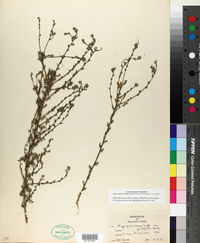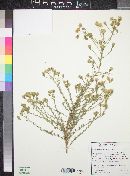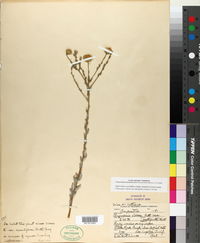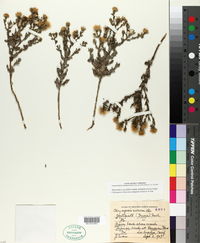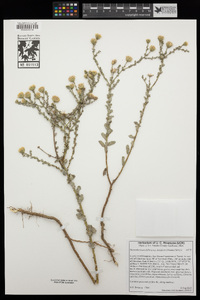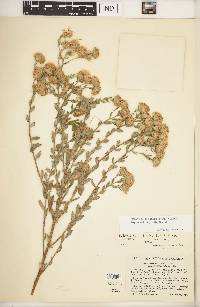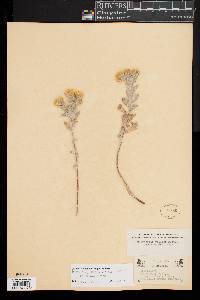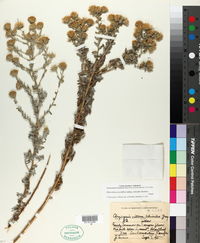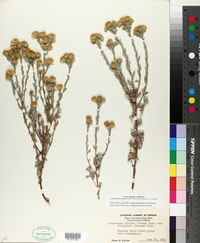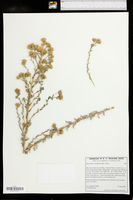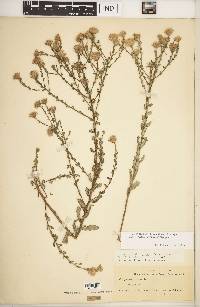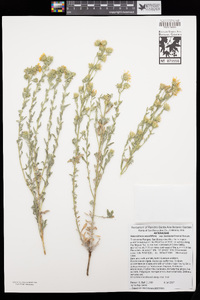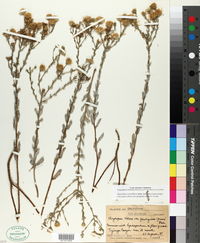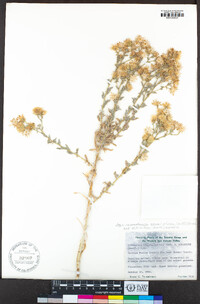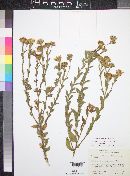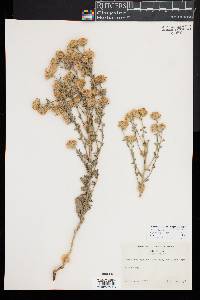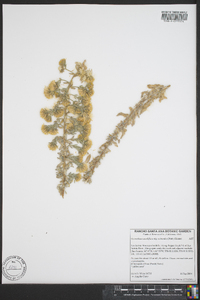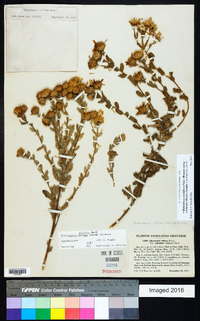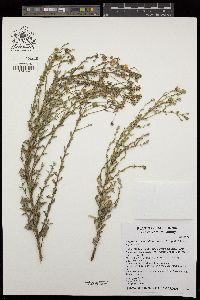
|
|
|
|
Family: Asteraceae
Sessile-Flower False Golden-Aster
|
Perennials, (10-)20-70(-110) cm; taprooted. Stems 1-40+, decumbent to ascending or erect (sometimes ± brittle, sometimes reddish brown), moderately to densely hispido-strigose (long-spreading hairs often broken off), sometimes moderately hairy and densely stipitate-glandular distally (axillary leaf fascicles sometimes present). Leaves: margins flat to strongly undulate; basal and proximal usually withering by flowering; proximal cauline subsessile, blades oblanceolate, (8-)15-40(-60) × (2.4-)4-8(-11) mm, bases cuneate, margins entire, strigoso-ciliate (proximal hairs longer, spreading), apices acute, faces moderately to densely hispido-strigose; distal sessile, blades usually narrowly to broadly lanceolate, sometimes oblanceolate, 6.5-40 × 1.5-8 mm, usually reduced distally, bases rounded, faces sparsely to densely hispido-strigose or short-strigose (5-245 hairs/mm 2 ), sparsely to densely glandular (0-50 glands/mm 2 ). Heads (1-)17-36(-126) in corymbiform or paniculiform arrays, branches ascending. Peduncles 2-100 mm, densely hispid, strigose, or glandular; bracts 2-5+, proximal lanceolate, leaflike, distal reduced, phyllary-like, (2-)2.5-8.5(-13) × (0.3-)0.5-1.8(-4) mm, sometimes a few, large, leafy bracts proximal to heads. Involucres cylindric, turbinate, or campanulate (campanulate upon drying), (6-)7.5-11(-15) mm. Phyllaries in 4-6 series, mid narrowly triangular, unequal (outer lengths 1 / 5 - 1 / 4 inner), margins hyaline, fimbriate-ciliate apically, faces very sparsely to moderately strigose, very sparsely to moderately stipitate-glandular. Ray florets (4-)7-15(-24); laminae (3.5-)4.5-10.5(-18.5) × (0.7-)1-1.7(-2.4) mm. Disc florets (9-)20-50(-81); corollas ± ampliate, (4-)5.5-7(-9.5) mm, glabrous to glabrate, lobes 0.4-1 mm, sparsely pilose (hairs 0.1-1 mm, osteolate-celled ones often fragile). Cypselae monomorphic, obconic, compressed, (1.3-)2-3(-4.5) mm, ribs 6-10, faces sparsely to moderately strigose; pappi off-white, outer of linear scales 0.25-0.5 mm, inner of 25-45 bristles 5-8(-10) mm, longest attenuate to weakly clavate. 2n = 18, 36. Except for Heterotheca monarchensis, H. sessiliflora is the only species in the section with long (more than 0.25 mm), fragile, osteolate-celled hairs on the corolla lobes, and it is the only species native to the central and southern coastal ranges and valleys of California. The species is divided into four subspecies and five varieties differentiated on the basis of indument features, degree of waviness of the leaf margins, and to a lesser extent, stem height and leaf shape. The treatment here is based on J. C. Semple (1996), which includes a key to and descriptions, illustrations, and distribution maps of the varieties.
|
This project was made possible in part by the Institute of Museum and Library Services [MG-70-19-0057-19].
Powered by Symbiota




